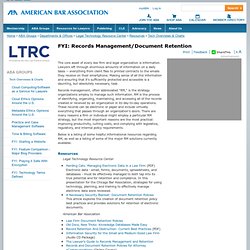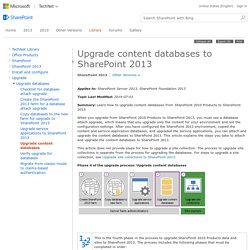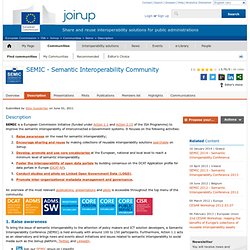

Practical Open Source Software for Libraries. Storage Management Initiative Specification (SMI-S) Data Management Forum. Home. Education and Training.
Knowledge_sharing. International Federation for Information Processing - IFIP. Harnessing the power of information — HURIDOCS Portal. FYI: Records Management/Document Retention. The core asset of every law firm and legal organization is information.

Lawyers sift through enormous amounts of information on a daily basis -- everything from client files to printed contracts to the emails they receive on their smartphone. Making sense of all this information and ensuring that it's sufficiently protected and accessible is a daunting, but absolutely necessary, task. Records management, often abbreviated "RM," is the strategy organizations employ to manage such information. RM is the process of identifying, organizing, maintaining, and accessing all of the records created or received by an organization in its day-to-day operations. These records can be electronic or paper and include virtually everything that passes through an organization's doors. Below is a listing of some helpful informational resources regarding RM, as well as a listing of some of the major RM solutions currently available.
Legal Technology Resource Center American Bar Association. Migrate databases. Applies to: SharePoint Server 2013, SharePoint Foundation 2013 Topic Last Modified: 2014-07-03 Summary: Learn how to upgrade content databases from SharePoint 2010 Products to SharePoint 2013.

When you upgrade from SharePoint 2010 Products to SharePoint 2013, you must use a database attach upgrade, which means that you upgrade only the content for your environment and not the configuration settings. After you have configured the SharePoint 2013 environment, copied the content and service application databases, and upgraded the service applications, you can attach and upgrade the content databases to SharePoint 2013. This article explains the steps you take to attach and upgrade the content databases to SharePoint 2013.
This article does not provide steps for how to upgrade a site collection. Phase 4 of the upgrade process: Upgrade content databases Watch the SharePoint 2013 Upgrade: Phase 4 video. Www.irmt.org/documents/educ_training/term modules/IRMT TERM Glossary of Terms.pdf. The Semantic Interoperability Centre Europe. Description SEMIC is a European Commission initiative (funded under Action 1.1 and Action 2.15 of the ISA Programme) to improve the semantic interoperability of interconnected e-Government systems.

It focuses on the following activities: Raise awareness on the need for semantic interoperability; Encourage sharing and reuse by making collections of reusable interoperability solutions searchable on Joinup. Develop, promote and use core vocabularies at the European, national and local level to reach a minimum level of semantic interoperability. Foster the interoperability of open data portals by building consensus on the DCAT Application profile for data portals in Europe (DCAT-AP).
An overview of the most relevant publications, presentations and pilots is accessible throughout the top menu of the community. 1. 2. SEMIC encourages the sharing and reuse of interoperability solutions by making collections of reusable interoperability solutions searchable on Joinup. 3. Emergency Info. 10 principles of effective information management. Written by James Robertson, published November 1st, 2005 Categorised under: articles, information management Improving information management practices is a key focus for many organisations, across both the public and private sectors.
This is being driven by a range of factors, including a need to improve the efficiency of business processes, the demands of compliance regulations and the desire to deliver new services. In many cases, ‘information management’ has meant deploying new technology solutions, such as content or document management systems, data warehousing or portal applications. These projects have a poor track record of success, and most organisations are still struggling to deliver an integrated information management environment.
Effective information management is not easy. This article draws together a number of ‘critical success factors’ for information management projects. From the outset, it must be emphasised that this is not an article about technology. Ten principles. Information Processing Tools: UNESCO. Glossary of terms relating to thesauri and other forms of structured vocabulary for information retrieval. DevInfo.